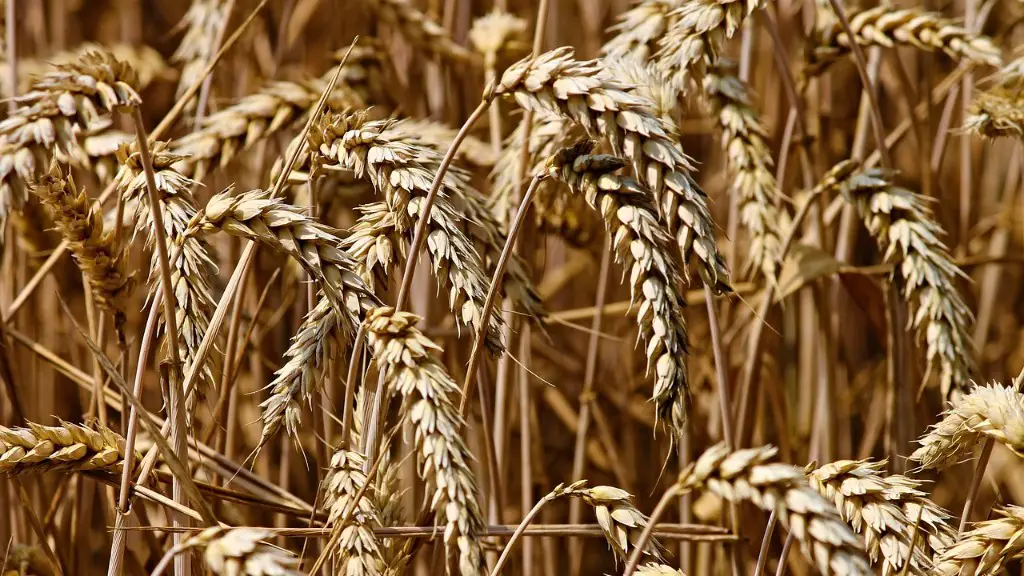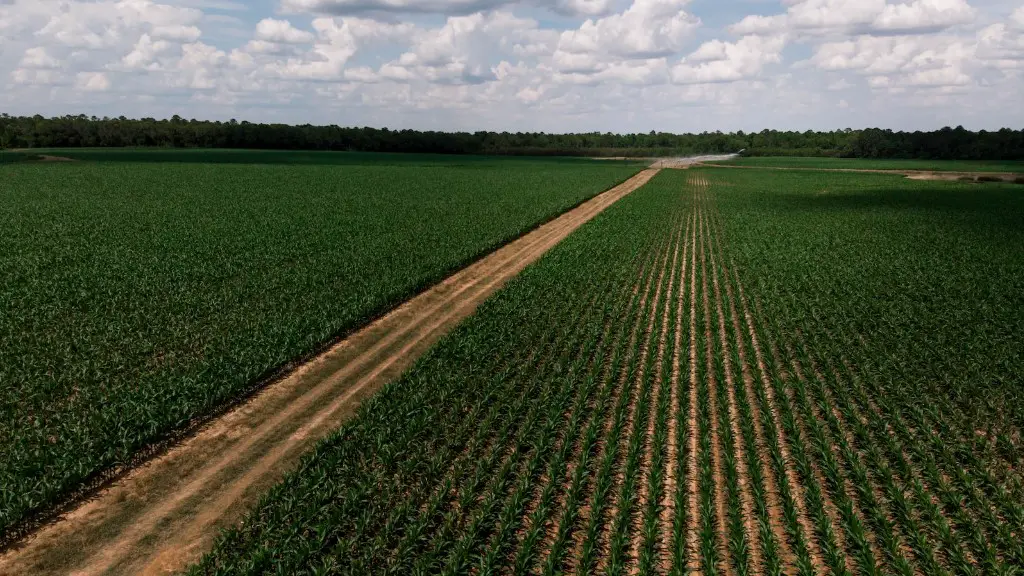In India, agriculture is one of the most important economic sector and employs around 54% of the workforce. The sector is currently worth $47.5 billion and is expected to grow to $100 billion by 2025. The government of India has taken various steps to promote and develop the sector. The agricultural sector has been de-regulated and a number of initiatives have been taken to boost agricultural production and productivity. The government has also launched a number of schemes to support the sector including the Pradhan Mantri Fasal Bima Yojana and Pradhan Mantri Krishi Sinchai Yojana.
The Agricultural and Processed Food Product Export Development Authority (APEDA) is a good place to start for information on getting into the agriculture export business in India. There are a number of other agencies and organizations that can offer support and assistance, including the National Dairy Development Board, the National Horticulture Board, and the National Seeds Corporation. There are also a number of private sector companies that are involved in the agriculture sector in India.
There is no one-size-fits-all answer to this question, as the best way to start an agriculture business in India will vary depending on the specific business and the resources available. However, there are some general tips that can be followed to help ensure success:
1. Research the market: It is important to have a good understanding of the agriculture market in India before starting any business. This includes understanding the demand for specific products, the competition, and the potential customer base.
2. Choose the right location: The location of the business is important for two reasons. First, it will determine the target market for the business. Second, it will affect the cost of production.
3. Develop a business plan: A comprehensive business plan is essential for any new business, and this is especially true for an agriculture business. The plan should outline the goals of the business, the strategies for achieving these goals, and the financial projections for the business.
4. Secure funding: Starting an agriculture business can be costly, so it is important to secure the necessary funding before getting started. This may involve taking out loans, finding investors, or using personal savings.
5. Hire the right employees: One of the keys to success
How do I start my own agricultural business?
Agriculture is a huge industry and there are many different ways to get involved in agribusiness. If you’re interested in starting your own agribusiness, there are a few things you need to do:
1. Market research – you need to understand the agricultural industry and what products or services are in demand.
2. Create a business plan – this will help you map out your business goals and how you plan to achieve them.
3. Arrange funds – you’ll need to have enough capital to start and grow your business.
4. Understand the laws and regulations – there are specific laws and regulations governing agriculture, so you need to make sure you’re familiar with them.
5. Register your business and acquire licenses – in order to operate legally, you need to register your business and get any licenses or permits that may be required.
6. Final arrangements – once you’ve done all of the above, you can start making final arrangements for your business, such as setting up your office or farm.
Dairy farming is an incredibly profitable agricultural business idea. Not only does it produce milk, but it also produces manure. There is a high demand for organic dairy products all year round, such as milk, cheese, curd, cream, and more.
How can I start a farming business in India
I have decided that I would like to pursue urban agriculture as my agriculture business idea. This is because I think it is a great way to connect with my community and provide them with fresh, healthy food. Additionally, I think it is a great way to teach people about where their food comes from and how it is grown.
UPL Ltd is the largest and top agriculture company in India. The company manufactures and markets crop protection products, intermediates, and specialty chemicals, among other industrial chemicals. UPL Ltd has a strong presence in India and abroad, with a wide range of products that cater to the needs of farmers. The company has a strong R&D base and is constantly innovating to bring new and better products to the market.
Is agricultural income tax free?
Agricultural income is defined under section 2(1A) of the Income-tax Act as any income derived from agricultural operations conducted in India. This includes income from crops, livestock, forestry, and fisheries. Agricultural income is exempt from tax under section 10(1) of the Income-tax Act.
Mushrooms, microgreens, ginseng, lavender, saffron, goji berries, and wasabi are some of the most profitable crops to grow. Each of these crops has unique properties that make them valuable and in demand by consumers. For example, mushrooms are a popular ingredient in many dishes and are known for their health benefits. Microgreens are versatile and can be used in salads, sandwiches, and as a garnish. Ginseng is a popular herbal remedy that is used to treat a variety of ailments. Lavender is a fragrant herb that is used in perfumes, soaps, and candles. Saffron is a spice that is used in many cuisines and is prized for its flavor and color. Goji berries are a superfood that is packed with vitamins and minerals. Wasabi is a spicy condiment that is often used in sushi. Each of these crops can be grown in small spaces and can be profitable for farmers.
Which is the richest crop in India?
There are a number of profitable crops in India that provide high profits to farmers. The top five most profitable crops in India are rice, wheat, maize, pulses, and jute. These crops are highly profitable due to the high demand for them in the country.
Pramod Gautam is one of the richest farmers in India and is an inspiration for many. He is from a village in Uttar Pradesh and started his career as an engineer. He later quit his job and started farming. He now owns a farm that is worth Rs. 1,000 crore. He has been successful in his farming career and has helped many other farmers in his village to become successful as well.
Which state farmers are rich in India
Uttar Pradesh is one of the top farming states in India and is ranked among the major state wise crop production in India. The state produces crops like bajra, rice, sugarcane, food grains, and many more. wheat is one of the top wheat producing states in India, followed by Haryana, Punjab, and Madhya Pradesh.
Subsistence farming is the predominant or most common style of farming in India. It is a type of farming in which farmers grow crops and/or rear animals mainly to feed themselves and their families. There is very little surplus production, and any surplus that is produced is usually sold in local markets. Primitive subsistence farming is a type of subsistence farming that is practised using very simple tools and methods. Intensive subsistence farming is a type of subsistence farming that is practised using more intensive methods, such as irrigation and the use of chemical fertilisers and pesticides. Extensive subsistence farming is a type of subsistence farming that is practised over a large area, and usually relies heavily on livestock grazing. Commercial farming is a type of farming that is undertaken primarily for the purpose of earning an income.
How much does a farm cost in India?
A farmhouse in India can cost anywhere from 15 lakhs to 65 crores, depending on the total land area, location, and construction.
It is unfair that farmers only receive ₹22,000 per acre when they should be receiving ₹51,800 per acre. This is something that the All India Kisan Sangharsh Coordination Committee (AIKS) has said. This needs to be rectified as it is not right that farmers are not being given the proper compensation for their efforts.
Who is the biggest farm owner in India
The above-mentioned farmers are doing good in their farming and are successfully grown different types of vegetables and fruits. They are using new techniques and technology in their farming which helps in getting good yields. They are also doing proper maintenance of their farms which is helping them in getting good quality produce. These farmers are also providing employment to the local people and are helping in the development of the rural areas.
India is the world’s largest producer of milk and milk products, pulses, jute and jute products, and ranks as the second largest producer of rice, wheat, sugarcane, groundnut, vegetables, fruit and cotton. The country has a well-developed livestock sector, with a large number of cattle, buffalo, sheep, goats and poultry. The Indian livestock sector is the second largest in the world, after China. The dairy industry is an important part of the Indian livestock sector, and is one of the largest in the world. India is the world’s largest producer of buffaloes, and the second largest producer of cattle. The country is also one of the leading exporters of beef and beef products.
What is the number 1 crop in India?
Rice is a staple food crop in many parts of the world, including India. India is the largest producer of rice in the world, and is also the second largest exporter of rice. Rice is grown in many parts of India, but the state of West Bengal is particularly known for its large production of rice. Therefore, option C is the correct answer.
As per the Income Tax Act of India, the Central Government is not allowed to impose or levy tax on agricultural income. This is because agricultural income is exempted from tax as per the exemption clause mentioned under Section 10 (1) of the Income Tax Act.
What if agriculture income is more than 5000
If the agricultural income is up to Rs 5,000, it can be shown under the column of Agriculture Income in ITR 1. But if the said income exceeds this limit, form ITR-2 is required to be filed.
Agricultural land in India can be bought by anyone. However, the maximum extent of land which a person can buy is 5995 acres. In Kerala, a joint family with more than five members can’t hold property of more than 15 acres while an unmarried person can’t hold more than 75 acres of land.
Conclusion
There is no one-size-fits-all answer to this question, as the best way to start an agriculture business in India depends on factors such as the type of agriculture business you want to start, the resources you have available, and the market you are targeting. However, there are some general tips that can help you get started:
1. Do your research: Before starting any business, it is important to do your research and understand the industry you are entering. When starting an agriculture business, research the different types of agriculture businesses that exist, and identify which type would be the best fit for you. Also, research the Indian market for agriculture products, and identify what demand exists for the products you want to produce.
2. Create a business plan: Once you have done your research and have a good understanding of the agriculture business you want to start, the next step is to create a business plan. This will help you map out the steps you need to take to get your business up and running, and will also give you a good understanding of the costs involved.
3. Get the necessary licenses and permits: Depending on the type of agriculture business you want to start, you may need to get certain licenses and permits from the government
There is no one-size-fits-all answer to this question, as the best way to start an agriculture business in India will vary depending on the specific business and its location. However, some tips on how to get started include doing research on the agricultural industry in India, networking with other agriculture businesses, and finding the right resources and support. With proper planning and execution, starting an agriculture business in India can be a successful endeavor.





